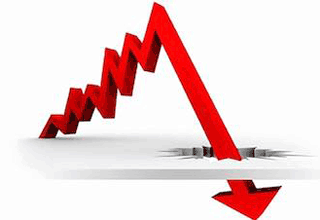Quote of the Week
“The board will not increase the cash rate target until progress is being made towards full employment and it is confident that inflation will be sustainably within the 2–3% target band”.
Philip Lowe, Reserve Bank Governor, after the RBA decided to keep the cash rate on hold.
House Prices Defy Gloomy Predictions
 CoreLogic’s latest Home Value Index shows that national median dwelling values declined by just 0.8% over the past three months.
CoreLogic’s latest Home Value Index shows that national median dwelling values declined by just 0.8% over the past three months.
Hobart (1.0%), Adelaide (0.7%), Darwin (0.4%) and Canberra (0.7%) recorded quarterly dwelling price increases, despite the predictions of many experts that house prices would collapse after Covid-19 struck.
“Whilst COVID-19 hit us swiftly this year and threw the Australian economy and property markets into turmoil, things settled down within the property market quicker than initially thought,” real estate economist Dr Diaswati Mardiasmo says.
Prices in most capital cities and regions remain higher than a year ago. Compared to July 2019, house prices are higher in Melbourne (9%), Sydney (12%), Brisbane (4%), Adelaide (2%), Hobart (6%) and Canberra (7%).
Tasmania (up 10%) led the growth in the regional areas, followed by Queensland (4.7%), New South Wales (4.5%) and Victoria (4.4%). Western Australia was the only state where regional house prices have fallen in the past year (-9%).
Regional Markets Grow Over 5 Months
 In July, five of the seven regional jurisdictions produced house price growth, compared to two of the eight capital city markets, according to the latest CoreLogic Home Value Index.
In July, five of the seven regional jurisdictions produced house price growth, compared to two of the eight capital city markets, according to the latest CoreLogic Home Value Index.
The data highlights the fact that we don’t have a single market in Australia. We have many different markets with different outcomes from one market to the next.
Looking at the longer-term patterns, some markets stand out for their consistency and strong resistance to the national economic forces.
Canberra has delivered some level of growth in each of the past five months. This tends to confirm the view that the national capital is the most Covid-proof city in the nation.
Adelaide has also shown great consistency, with small rises in four of the past five months, including in July.
Two of the regional markets, South Australia and Tasmania, have delivered price growth in all of the past five months. And two others – NSW and Queensland – have achieved growth in four of the past five months, including during July.
Property Better Than Shares, Gold, Cash
 Property is a better investment option than shares, gold, super or cash in the current environment, according to a survey by comparison website Finder.
Property is a better investment option than shares, gold, super or cash in the current environment, according to a survey by comparison website Finder.
Finder’s latest RBA Cash Rate Survey found 32% of analysts and economists rated property as the best investment option, followed by shares at 21%, gold 14%, superannuation 11% and cash 7%.
All of the respondents expected a cash rate hold in August, though most (72%) forecast a rate increase in 2021 or 2022.
Finder noted that a “surprisingly high” percentage (42%) of those surveyed believed now was a good time for home-owners to put their property on the market; only 25% said homeowners should wait.
“This environment has also pushed interest rates lower than ever,” said Finder insights manage, Graham Cooke. “We’ve just seen the first sub-2% loan hit the market, and that could be a sign of things to come.”
With many investors avoiding the market, banks are eager for new business, especially for owner-occupier customers. It’s the ultimate borrower’s market, he says.
Rental Searches Rise 39%
 The number of rental searches on realestate.com.au rose 39% while rents on average fell by 1.3% over the last quarter, shows data from REA Group.
The number of rental searches on realestate.com.au rose 39% while rents on average fell by 1.3% over the last quarter, shows data from REA Group.
“Nationally, the cost of renting is now back at levels last recorded in March 2017,” says REA Group director of economic research Cameron Kusher.
“Not only are people searching more, the volume of high-intent activity on the rental section of realestate.com.au is also up 75% over the same period.”
Kusher says the results are a clear indicator of how the pandemic has changed the property market dynamic.
“Rental rates are coming under pressure from multiple sources,” he says. “We have virtually no migration, there is new stimulus encouraging purchasing from first-home buyers who otherwise may have been renters, and then there’s the fact that unemployment is rising, and younger people are most affected.”
Mortgage Rates Fall Below 2%
 Banks are offering special deals, including honeymoon interest rates below 2%, to win new business from home buyers, says Sally Tindall, director of research at RateCity.
Banks are offering special deals, including honeymoon interest rates below 2%, to win new business from home buyers, says Sally Tindall, director of research at RateCity.
One lender is offering a variable-rate home loan of 1.99% and more lenders are expected to follow suit, as competition for new mortgages intensifies. Another lender is offering “cashbacks” of up to $4,000 for health, education and emergency services workers.
Reserve Bank figures for May show the average owner-occupier was paying 3.26% interest on their existing home loan while those who applied for a new home loan would pay 2.93% on average.
Many of the best deals are available to new customers who have big deposits, such as those refinancing who have built equity in their properties.
Introductory rates typically revert to a higher interest rate after one or two years and could cost the borrower more in the long term unless mortgage holders commit to regularly refinancing their home loan, says Tindall.




